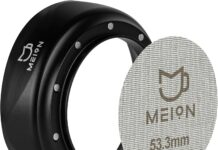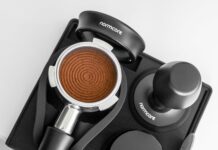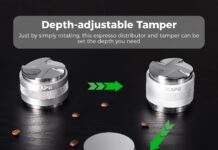Are you looking for a refreshing and invigorating way to stay cool during the scorching summer months? Look no further than cold brewing your very own iced coffee! By steeping coffee grounds in cold water over an extended period, we unlock new flavors and experience a smoother, less acidic cup of joe.
This article will explore the undeniably cool world of cold brewing and why it is becoming the go-to method for coffee enthusiasts everywhere. Get ready to quench your thirst and satisfy your caffeine cravings in the most deliciously chilled way possible.
Why Choose Cold Brew?
Smooth and Less Acidic Flavor
One of the main reasons people choose cold brew coffee is its smooth and less acidic flavor. Traditional hot brewed coffee can often taste bitter or burnt, which can be off-putting for some individuals. However, when coffee beans are steeped in cold water for an extended period, the resulting brew is significantly smoother and has a lower acidity. This makes cold brew coffee a delicious and refreshing option for those who prefer a milder and less harsh-tasting beverage.
Reduced Bitterness
Another advantage of cold brew coffee is its reduced bitterness compared to hot brewed coffee. The natural oils and compounds in coffee beans that contribute to the bitter taste are not as readily extracted with the cold brewing method. This results in a more balanced and enjoyable flavor profile, making cold brew a perfect choice for those who find regular coffee’s bitterness overwhelming.
Versatile Brewing Method
Cold brewing is a versatile method that allows for experimentation and customization. Unlike traditional brewing methods that require specific equipment and techniques, cold brews can be made using various tools and ingredients. Whether you prefer using a coffee maker designed explicitly for cold brew or looking for alternative methods such as a simple mason jar or a French press, there are endless possibilities to create your perfect cup of cold brew coffee.
Lower Extraction of Oils and Compounds
One of the critical benefits of cold brewing is the lower extraction of oils and compounds from the coffee beans. At the same time, hot brewing methods can extract a higher concentration of these compounds, and cold brewing results in a cleaner and smoother cup of coffee. This lower extraction can be beneficial for those who are sensitive to certain coffee compounds or who are looking for a purer coffee experience.
Tools and Ingredients for Cold Brewing
Coffee Beans
The foundation of a good cold brew is high-quality coffee beans. It is essential to choose coffee beans specifically suited for cold brewing. Look for beans that have been explicitly roasted for cold brew or beans that are described as having a smooth and well-rounded flavor. Experimenting with different beans from various regions can also add a unique dimension to your cold brew experience.
Grinder
To ensure the best flavor extraction, it is recommended to grind your coffee beans right before brewing. Investing in a burr grinder can significantly enhance the quality of your cold brew. Burr grinders provide a consistent grind size, which is crucial for proper extraction. Aim for a medium-coarse grind for cold brewing to prevent over-extraction and bitterness.
Water
Water quality is often overlooked but plays a crucial role in the taste of your cold brew. Using filtered or spring water is recommended to avoid any potential impurities that can alter the flavor. Additionally, cold or room temperature water is essential for the cold brewing process, as hot water can result in a different flavor profile and extraction.
Cold Brew Maker or Alternatives
While a cold brew maker can simplify the brewing process, investing in one is unnecessary. Cold brew can be made using alternative methods such as a French press, a mason jar, or a simple mesh strainer. The choice of tools ultimately depends on personal preference and convenience. Experimenting with different brewing methods can also add a fun and creative element to your cold brew journey.
Step-by-Step Guide to Cold Brew Coffee
Choosing the Right Coffee Beans
When choosing coffee beans for cold brewing, choose ones suited for this specific brewing method. Look for beans labeled cold brew or those known for their smooth flavor profile. It is also worth considering beans from different regions to experience the variety of flavors that can be achieved with cold brewing.
Grinding the Coffee Beans
To ensure optimal flavor extraction, grind your coffee beans just before brewing. A medium-coarse grind is ideal for cold brew to prevent over-extraction and bitterness. Use a burr grinder for a consistent grind size. Adjust the grind size according to your desired strength and flavor using alternative brewing methods, such as a French press or a mason jar.
Measuring and Mixing the Coffee and Water
For a standard cold brew ratio, use a 1:4 coffee-to-water ratio. For example, if you are using 1 cup of coffee, mix it with 4 cups of water. This ratio can be adjusted based on personal preference and desired strength. Combine the ground coffee and room temperature or cold water in a brewing vessel, ensuring that all the coffee grounds are fully saturated.
Steeping the Coffee
Once the coffee and water are mixed, it’s time to let it steep. Cover the brewing vessel and let it sit at room temperature for at least 12 to 24 hours. The longer the steeping time, the more potent and concentrated the cold brew. Experiment with different steeping times to find your preferred strength. Avoid steeping for more than 24 hours, leading to an over-extracted and bitter taste.
Straining and Storing the Cold Brew
After steeping, strain the cold brew to separate the liquid from the coffee grounds. A fine-mesh strainer or cheesecloth can be used for this purpose. If using a French press, press the plunger down to separate the liquid from the ground. Transfer the strained cold brew into an airtight container and store it in the refrigerator for up to one week.
Cold Brew Variations and Recipes
Classic Cold Brew
The classic cold brew is a simple yet delicious way to enjoy the smooth flavor of cold brew coffee. To make a classic cold brew, follow the step-by-step guide above using your preferred brewing method and ratios. Serve it over ice and enjoy the pure and refreshing taste of cold brew coffee.
Iced Latte
For those who prefer a milkier and creamier cold brew experience, an iced latte is the way to go. Start by preparing a batch of cold brew using the classic method. Fill a glass with ice, pour in your desired cold brew, and top it off with your favorite milk or milk alternative. Add sweetener if desired and stir well. This creamy and refreshing drink is perfect for a hot summer day.
Vietnamese-Style Cold Brew
Vietnamese coffee is known for its unique combination of strong coffee and sweetened condensed milk. To make a Vietnamese-style cold brew, prepare a batch of cold brew using a dark roast coffee and the classic method. Fill a glass with ice, pour in your desired cold brew, and slowly pour in sweetened condensed milk to taste. Stir well and experience the rich and flavorful Vietnamese-inspired cold brew.
Mocha Cold Brew
For those who love the indulgent combination of coffee and chocolate, a mocha cold brew is the ultimate treat. Prepare a batch of cold brew using your preferred brewing method, but this time, add a tablespoon or two of unsweetened cocoa powder to the coffee grounds before steeping. Once the cold brew is ready, serve it over ice and add a splash of milk or cream. Sweeten with chocolate syrup or your favorite sweetener, and enjoy the delightful blend of coffee and chocolate flavors.
Serving and Enjoying Cold Brew
Adding Ice and Water
Cold brew is often served over ice to enhance its refreshing and cooling qualities. To serve, fill a glass with ice and pour in your desired cold brew. You can also dilute the cold brew with water to reduce the strength and customize the flavor to your preference. Experiment with ice-to-cold brew ratios and water additions to find your ideal balance.
Sweeteners and Flavorings
Customizing the flavor of your cold brew is easy with the addition of sweeteners and flavorings. Popular choices include simple syrup, flavored syrups, honey, agave nectar, or vanilla extract. Add the desired sweetener or flavoring to your cold brew and stir well to incorporate the flavors. Remember to start with a small amount and adjust to taste.
Garnishes and Toppings
Elevate your cold brew experience by adding garnishes and toppings. Fresh mint leaves, a sprinkle of cinnamon or cocoa powder, a dash of nutmeg, or a drizzle of caramel sauce can add a delightful touch to your cold brew. Get creative and experiment with different combinations to find your favorite flavors.
Understanding Dilution and Strength
It is important to note that cold brew is inherently more potent and concentrated than traditional hot-brewed coffee. When serving and enjoying a cold brew, it is helpful to understand dilution and strength to avoid an overly strong or weak cup. Dilution refers to adding water or other liquids to the cold brew to reduce the strength. Experiment with different dilution ratios to find your preferred balance between strength and flavor.
Storing and Preserving Cold Brew
Proper Storage Techniques
Proper storage techniques are essential to ensure the freshness and quality of your cold brew. Transfer the strained cold brew into an airtight container or bottle and store it in the refrigerator. This will help preserve the flavor and prevent any contamination. Avoid leaving cold brew at room temperature for an extended period, as it can lead to spoilage and a decrease in taste.
Best Practices for Longevity
While cold brew can be stored in the refrigerator for up to one week, it is best to consume it within the first few days to experience the optimal flavor and freshness. To maximize the longevity of your cold brew, avoid cross-contamination by using clean utensils and avoiding contact with other foods or strong odors. Keep the cold brew container tightly sealed to prevent any air exposure, which can result in off-flavors and deterioration.
How Long Can Cold Brew Be Stored?
Cold brew can be stored in the refrigerator for up to one week. However, it is essential to note that the flavor and quality may gradually deteriorate over time. For the best taste experience, consuming a cold brew within the first few days of brewing is recommended. If you have an excess amount of cold brew, consider freezing it in ice cube trays for future iced coffee or blend it into smoothies for a flavorful kick.
The Best Cold Brew Coffee Brands
Brands and Roasters to Try
If you prefer the convenience of pre-packaged cold brew or want to explore different brands, there are several reputable cold brew coffee brands and roasters. Some popular options include Stumptown Coffee Roasters, Blue Bottle Coffee, Chameleon Cold Brew, and La Colombe. These brands specialize in cold brew and offer a selection of flavors and strengths to cater to different preferences.
Pre-Packaged Cold Brew Products
For those seeking an even more convenient cold brew solution, various pre-packaged cold brew products are available on the market. These products often come in ready-to-drink bottles or cans, perfect for on-the-go or quick and easy preparation. Look at your local grocery store or specialty coffee shops to discover a range of pre-packaged cold brew options to suit your taste.
Common Mistakes to Avoid
Using the Wrong Grind Size
One of the most common mistakes in cold brewing is using the wrong grind size. A finer grind can result in over-extraction, causing the cold brew to taste bitter and astringent. On the other hand, an overly coarse grind can lead to under-extraction and a weak, watery brew. Experiment with different grind sizes to find the right balance and adjust your preference.
Incorrect Coffee-to-Water Ratio
The coffee-to-water ratio plays a vital role in the flavor and strength of your cold brew. Using too much coffee can result in an overpowering and intense brew, while using too little coffee can produce a weak and diluted cup. Following or adjusting the recommended ratios to suit your taste preference is essential. Remember that brewing methods and personal preferences may require slight variations in ratio.
Steeping for Too Long or Too Short
The steeping time of the coffee grounds in cold water is crucial for achieving the desired flavor and strength. Steeping for too long can result in an over-extracted and bitter brew, while steeping for too short may yield a weak and underdeveloped flavor. Aim for 12 to 24 hours of steeping, and experiment to find the perfect balance for your taste.
Neglecting to Strain Properly
Staining the cold brew is essential for a smooth and enjoyable drinking experience. Failing to strain the brew adequately can result in a gritty texture and unwanted sediment in your cup. Ensure you use a fine-mesh strainer or cheesecloth to remove all the coffee grounds from the liquid. Remember to press the plunger down fully to separate the grounds effectively if using a French press.
Health Benefits of Cold Brew
Lower Acid and Potential Digestive Benefits
Cold brew coffee is known for its lower acidity than hot brewed coffee. This reduced acidity can benefit individuals with sensitive stomachs or digestive issues. The lower acid content may result in less digestive discomfort and acid reflux symptoms for those more prone to these issues.
Reduced Caffeine Content
Cold-brew coffee typically has a lower caffeine content than hot-brewed coffee. The extended steeping process of cold brew results in a milder extraction of caffeine from the coffee beans. This can be advantageous for individuals looking to reduce their caffeine intake or who are more sensitive to the effects of caffeine.
Antioxidant Properties
Like hot brewed coffee, cold brew coffee contains antioxidants associated with various health benefits. Antioxidants help combat oxidative stress and inflammation in the body, potentially reducing the risk of chronic diseases such as heart disease, certain cancers, and neurodegenerative disorders. Enjoying a cup of cold brew coffee can contribute to your antioxidant intake.
Hydration and Refreshment
Cold brew coffee can provide hydration and refreshment, especially on hot summer days. It offers an alternative to traditional hot coffee and can be enjoyed iced or blended with ice for a cooling effect. Staying hydrated is essential for overall health, and opting for a refreshing cold brew can contribute to your daily fluid intake.
Exploring the Cold Brew Trend
Popularity of Cold Brew Coffee
Cold brew coffee has been steadily gaining popularity in recent years. Its smooth and flavorful profile and versatility have attracted a wide range of coffee enthusiasts. Cold brew can be found in specialty coffee shops, cafes, and even mainstream coffee chains. Its popularity reflects the growing desire for unique and alternative coffee experiences.
Innovation and Creativity in Cold Brew Products
The cold brew trend has sparked innovation and creativity in the coffee industry. As the demand for cold brew rises, companies are exploring new flavors, brewing techniques, and packaging options. The possibilities for experimentation and enjoyment are endless, from flavored cold brews to nitro cold brew on tap or even concentrated cold brew shots.
Cold Brew Cocktails and Mocktails
Cold brew coffee has also found its way into the world of mixology, inspiring the creation of cold brew cocktails and mocktails. Bartenders and coffee enthusiasts are exploring the synergy between cold brew and various spirits, creating unique and refreshing beverages. From traditional Espresso Martinis with a cold brew twist to non-alcoholic mocktails infused with cold brew, these concoctions offer a delightful fusion of flavors and a new way to enjoy cold brew coffee.
Iced Coffee – Keep Your Cool with Cold Brewing. Cold brew coffee offers a smooth and less acidic flavor than traditional hot brewed coffee. Its reduced bitterness and versatile brewing method make it popular among coffee enthusiasts. To make a delicious batch of cold brew coffee, you only need high-quality coffee beans, a grinder, water, a cold brew maker, or alternative brewing methods such as a French press or a mason jar.
Start by choosing the right coffee beans specifically suited for cold brewing. Opt for beans labeled as cold brew or those known for their smooth flavor profile. They are grinding the coffee beans just before brewing is critical to optimal flavor extraction. Use a burr grinder for a consistent medium-coarse grind. Measure and mix the coffee and water using a 1:4 coffee-to-water ratio, adjusting based on personal preference. Let the mixture steep at room temperature for 12 to 24 hours, then strain and store the cold brew in the refrigerator.
Once you have mastered the basic cold brew, you can explore various cold brew variations and recipes. The classic cold brew is a simple and refreshing option. For a creamier experience, try an iced latte by adding milk or milk alternative to your cold brew over ice. With sweetened condensed milk, Vietnamese-style cold brew offers a rich and unique flavor combination. Mocha cold brew, adding cocoa powder, satisfies the craving for coffee and chocolate in one delightful cup.
When serving and enjoying cold brew coffee, adding ice or diluting it with water helps to enhance its refreshing qualities. Customize your cold brew with sweeteners such as simple syrup, honey, or flavored syrups, and experiment with garnishes and toppings such as mint leaves or a sprinkle of cinnamon. Understanding dilution and strength is crucial, as cold brew is inherently more potent and concentrated than hot brewed coffee.
To store and preserve your cold brew, transfer it to an airtight container and store it in the refrigerator. Proper storage techniques and cold brew use within the first few days result in the best-tasting experience. If you’re looking to explore different brands, reputable cold brew coffee brands and roasters are available, as well as pre-packaged cold brew products for added convenience.
Avoid common mistakes in cold brewing, such as using the wrong grind size, incorrect coffee-to-water ratio, steeping for too long or too short, and neglecting to strain correctly. By avoiding these mistakes, you can ensure a flavorful and enjoyable cold brew. Cold brew coffee offers various health benefits, including lower acidity and potential digestive benefits, reduced caffeine content, antioxidant properties, and hydration.
The cold brew trend has grown in popularity, leading to innovation and creativity in the coffee industry. Cold brew coffee can be found in specialty coffee shops, cafes, and mainstream coffee chains, providing unique and refreshing options for coffee enthusiasts. This trend has also extended to mixology, with bartenders and coffee enthusiasts creating cold brew cocktails and mocktails, offering a new realm of flavors and experiences.
So, whether you’re looking for a smooth and flavorful coffee experience, a refreshing summer drink, or a versatile ingredient for creative cocktails, cold brew coffee is worth exploring. Give it a try, and keep cool with the delightful world of cold brewing.





































